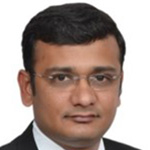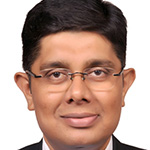IoT: in simple language IoT means the ability to make every device or machine connected with internet. Be it any machines in automotive industry, manufacturing, aviation, retail, healthcare, hospitality, pharma, tours & travels and even education. The objective is to make the progress monitored automatically without less human intervention and bring safety and security in the case of citizens.
Today, we are heading towards an era of automation and smart living. Every city wants its citizens to roam free without any security apprehension, every manufacturing floor needs to monitor its machines firing without any glitch, every operation bed monitors the health of the patient, every hotel tracks the movement of its guests and every retail store keeps the track of its rack which goods are fast moving, which refrigerator needs replenishment, etc. So, the applications are far too many for every industry. This brings a new paradigm of business opportunity for the partners. The traditional business of end point to datacenter or cloud is not any more attractive for the thousands of Indian IT partners from revenue point of view. The applications are becoming consumerised, the margins are becoming wafer thin in the traditional business. There is nothing much to do for a partner. Therefore there is certainly a hidden agenda among all business owners as to how embrace new business opportunities which can fetch them healthy revenue and make their organizations future ready for the new age workforce including their own siblings to cherish their brighter career opportunities, which has thrill, creativity and money.
[quote font=”tahoma” font_size=”13″ font_style=”italic” color=”#262626″ bgcolor=”#f9f9f9″]
 “Technology, from being a back-end support team within organizations, is now in the forefront because of IOT. Understanding and embracing this change would pave the way. More fund allocation, appropriate resources and most importantly a sound road-map for IOT are steps companies need to action upon.”
“Technology, from being a back-end support team within organizations, is now in the forefront because of IOT. Understanding and embracing this change would pave the way. More fund allocation, appropriate resources and most importantly a sound road-map for IOT are steps companies need to action upon.”
Supaul Chanda,
Business Head,
TeamLease Digital
[/quote]
To many of the pundits new age applications including IOT, AI, BI, AR VR, etc. where challenge lies from application integration and execution point of view can bring back the old age glory of good margin and prosperous business year on year. So to us among all the technologies IOT is becoming the most complex and therefore the most margin garnering opportunity for the partners.
[quote font=”tahoma” font_size=”13″ font_style=”italic” color=”#262626″ bgcolor=”#f9f9f9″]
 “By early 2019 the count of connected devices was just around 200 million across industries and various spectrums, and research shows that this is going to grow multifold/substantially and would reach close to about 1.9 Billion by end of 2020.”
“By early 2019 the count of connected devices was just around 200 million across industries and various spectrums, and research shows that this is going to grow multifold/substantially and would reach close to about 1.9 Billion by end of 2020.”
Nabuath Ulla Khan,
Practice Head Manufacturing and IOT Analytics,
SAS India.
[/quote]
be fear free while commuting In this context Internet of Things or IOT has emerged to be a strong component as a more prosperous area to express this kind of new technology. It was first coined by Kevin Ashton in the RFID journal 1999. And in 2005 this name was modified to ‘Internet of Things’. Research on IoT has been booming for the past 6 years due to technological advances and potential for applications. IoT is a new technology that is used to express a modern wireless telecommunication network, and it can be defined as an intelligent and interoperable node interconnected in a dynamic global infrastructure network, also it seeks to implement the connectivity concept of anything from anywhere at any time.
IoT Advantages and Risks
Due to its wide-ranging benefits and applicability across sectors, IoT has been labelled as ‘the next Industrial Revolution’. Sectors as varied as Healthcare, Manufacturing, Logistics, e-commerce, etc. are aggressively adopting IoT. For example, in the Healthcare sector, one of the biggest adopter of IoT technology can be Remote Patient Monitoring Solutions- doctors now rely on sensors to monitor vital parameters like heart rate, blood sugar etc., leading to newer service offerings from the healthcare providers in Preventive & Palliative Healthcare. Similarly Hospitals or Healthcare providers can deploy IoT solutions for Asset Location, Asset Management, Asset Utilization, Asset loss prevention etc.
[quote font=”tahoma” font_size=”13″ font_style=”italic” color=”#262626″ bgcolor=”#f9f9f9″]
 “Enterprises and service providers have been looking at IoT as a key enabler to drive digital transformation and unlock operational efficiencies. India offers an opportunity to deploy emerging technologies like IoT at a large scale and bring efficiencies and economies of scale. Furthermore, The Government of India is taking several measures to push this adoption, with initiatives like Make in India, Digital India, Smart Cities, etc.”
“Enterprises and service providers have been looking at IoT as a key enabler to drive digital transformation and unlock operational efficiencies. India offers an opportunity to deploy emerging technologies like IoT at a large scale and bring efficiencies and economies of scale. Furthermore, The Government of India is taking several measures to push this adoption, with initiatives like Make in India, Digital India, Smart Cities, etc.”
Shrirang Deshpande,
Country Manger – Strategic Accounts,
Vertiv India
[/quote]
An IoT application is available in every industry for, construction, travel and transportation, personal care, retail, agriculture, etc. And in the industrial area Internet of Things revolves around automation and logistics and creating smarter solutions, programmatically adjusting to human behavior.
Zebra has launched its third annual Intelligent Enterprise Index, which indicates a record 61% of enterprises worldwide are on the path to becoming “intelligent,” compared to only 49% in 2018.
“With the continued adoption of mobility and IoT, the edge of enterprise operations is becoming increasingly connected. This unprecedented, growing level of connectivity is generating vast amounts of actionable data about processes and assets that can be leveraged to transform workflows to improve business performance and outcomes. As a breakthrough data intelligence platform that combines IoT end-point connectivity, configuration management, data transport, data storage, analytics and machine learning into one platform, Zebra’s Savanna turns raw data into actionable insights for businesses to deliver new levels of service, productivity and profitability,” said Deep Agarwal, Regional Sales Director of India, Zebra Technologies.
Every new technology faces lots of challenges in its initial phases. The Internet of Things also poses some serious issues that need to be tackled well to utilize its fullest potential. In the case of IoT there are concerns about the security fallout from having an ecosystem of connected devices that are hooked to the cloud. As with all complex systems, there are more opportunities for failure. While the application of IoT appears to be straightforward, it is not without challenges.
IoT market opportunities
Commenting on the market opportunity in IoT, Nabuath Ulla Khan, Practice Head Manufacturing and IoT Analytics, SAS India says “This has been a hot question and a topic that everyone is focused on today, multiple research firms including the big 4’s, NASSCOM etc.. have done extensive research on this and have published numbers ranging from about USD 5.6 billion in 2020 to about USD 9.0 billion in 2020“.
And explaining about the status of market adoption of IoT, he further adds,” IoT adoption isn’t matching the pace of its growth in form of technological innovations, constant reduction in sensor/component cost, etc. Though in parallel there are several market forces such as real-time analytics and cloud computing, in addition to the reduced component cost that is fueling positive sentiments towards adoption of IoT at large scale, but there are still a few concerns revolving around security, complexity and skill gap that are acting inversely and slowing down the adoption rate”.
Elaborating more on market adoption Supaul Chanda, Business Head, TeamLease Digital says,” from tech perspective we are seeing the rapid changes IOT is bringing about. The challenge might be government red-tape, which at present is minimal; rather there is a push from the government as well for adoption and upskilling on this front. The only other challenge would be human imagination running faster than our tech advancement, and we might have products which are not market yet ready because the tech is yet to evolve”.
With these new opportunities channel partners need to consider several factors. MSPs will have to analyze the data collected by the devices in a way that provides informed business outcomes for customers. Offering IoT managed services is all together adopting a new technology with new practice area and Channel partners that want to offer IoT managed services will need to bring new expertise into their business.
Commenting on business opportunity in IoT for partners and what they need to do in order to embrace IoT as a business opportunity for them Shrirang Deshpande, Country Manger – Strategic Accounts,
Vertiv India says, “Partners need to be prepared to lay the groundwork for IoT and priorities IoT discussions with customers, as it is a very significant opportunity. While IoT opportunities for a majority of channel partners are at a nascent stage, they need to be prepared to address customer queries on IoT, discuss, and help prepare an IoT roadmap going forward. At Vertiv, we encourage our channel partners to begin planning their IoT roadmaps and pay attention to vertical market skills along with integration capabilities. If they can assess the customer’s network and security, they are better placed to ensure that the customer is ready to adopt IoT technology. This could mean guiding customers around Vertiv’s IoT products and services, or looking at a customer’s infrastructure and assessing if their capabilities can support IoT when the time comes. We believe this to be a brilliant opportunity for our channel partners as they can leverage their existing expertise of vertical markets and propel it with a new technology”.
Early adopters of IoT
Some industries have been faster than others to adopt the internet of things; the table below shows the current state and future projection
Application areas for IoT
Finally……..
The future of the IoT structure relies on the integration among real or physical worlds, the cyber-world and social world IoT improves the decision-making habits of decision-makers. The emergence of IoT and related technologies, such as Cloud Computing, provides the ability to remove Data sources in different domains. Typically, any Data is considered useful in the domain itself, and data on shared domains can be used to provide different strategies.
Machine learning and artificial intelligence are key technologies that are used to provide value-added applications along with IoT and big data in addition to being used in a stand-alone mode. Before the emergence of IoT and cloud computing, the use of these technologies was not possible due to the lack of data and required computational power. It is anticipated that the speed of technological progress in the next ten years, will be equal to the past thirty years. Therefore, we have to use all our efforts to update our lives to the Internet of Things technology regarding hardware and software. Although IoT has quite a few disadvantages, its advantages of saving the consumed time and costs cannot be ignored. So the time isn’t far when the Internet of Things will be commonly seen in both households and companies. Efforts will have to be made to find ways to combat its disadvantages.


